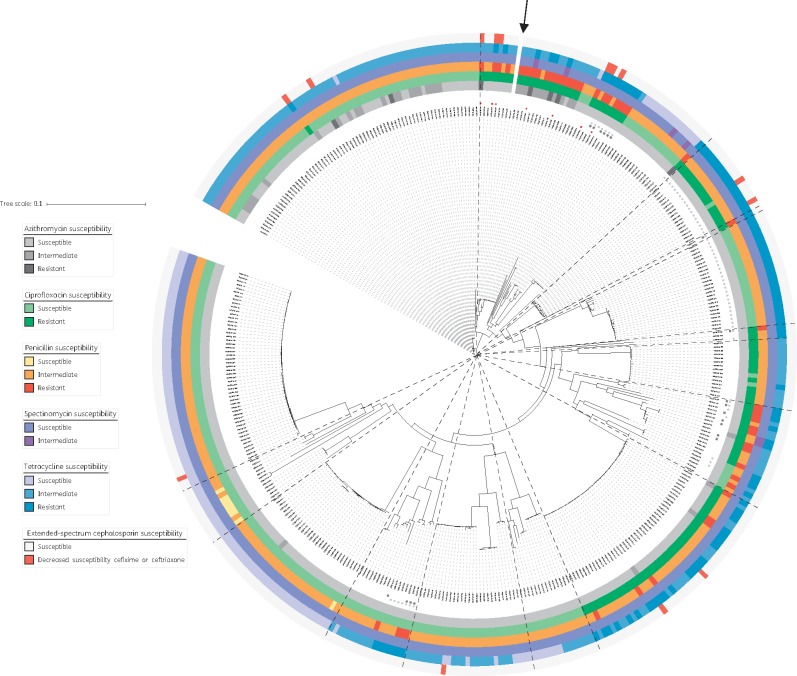Figure 2.
Antimicrobial resistance among Neisseria gonorrhoeae isolates in New Zealand, 2014–15. Maximum likelihood tree of all 398 New Zealand isolates, after adjusting for recombination with Gubbins.15 Classifications based on MIC thresholds from reference 11, or if unavailable from reference 12. For azithromycin, resistance corresponds to MIC >0.5 mg/L, intermediate susceptibility corresponds to MIC of 0.5 mg/L and susceptible corresponds to MIC ≤0.25 mg/L. For ciprofloxacin, resistance corresponds to MIC ≥1 mg/L, intermediate is 0.12–0.5 mg/L and susceptible is ≤ 0.06 mg/L. For penicillin, resistance corresponds to MIC ≥ 2 mg/L, intermediate susceptibility is 0.12–1 mg/L and susceptible is ≤ 0.06 mg/L. For spectinomycin, resistance corresponds to MIC ≥128 mg/L, intermediate susceptibility is 64 mg/L and susceptible is ≤ 32 mg/L. For tetracycline, resistance corresponds to MIC ≥2 mg/L, intermediate susceptibility is 0.5–1 mg/L and susceptible is ≤ 0.25 mg/L. For the extended-spectrum cephalosporins, cefixime and ceftriaxone: decreased susceptibility corresponds to MICs of ≥ 0.12 mg/L and ≥0.06 mg/L, respectively. Isolates with the blaTEM-1 gene, associated with resistance to penicillins, are indicated with black squares, while isolates with the tetM gene are indicated with light grey circles. Isolates classified as pre-MDR are indicated in the inner ring with red stars. The BAPS groups identified (as shown in Figure 1) have been overlaid using dashed lines. The reference genome is indicated with an arrow.

